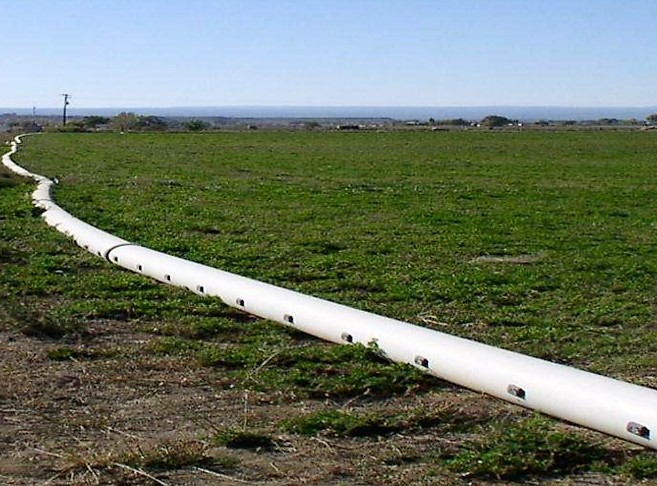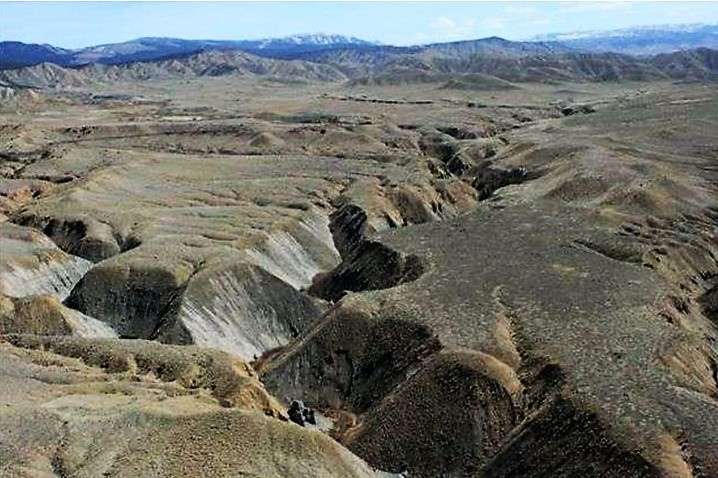Photo Courtesy Wildlands Restoration Volunteers
Photo Courtesy Wildlands Restoration Volunteers
Chico Basin Riparian Restoration Project 2014
Implemented by Wildlands Restoration Volunteers
(Healthy Rivers Fund $8300)
In the late 1800's and early 1900's, people planted tamarisk and Russian Olive trees by the rivers to help stop erosion on the banks of the river and for decoration on the Chico Basin Ranch. It did help with erosion; however, it formed many more problems.
These species drink much more water from the rivers than native plants and trees. This leaves less water to flow downstream. Also, Russian Olive trees take salt from the water and ground and bring it to the top surface soil. The native plants have a hard time growing in the salty soil and the tamarisks and Russian Olives take over. Few animals can eat the tamarisk and Russian Olives. Without the native plants, fish, birds, insects, deer, and other animals do not have anything to eat or places to live. From here a domino effect continues up the food chain.
Photo Courtesy Wildlands Restoration Volunteers
Photo Courtesy Wildlands Restoration Volunteers
Healthy Rivers Fund support helped a consortium of nonprofit organizations round up volunteers to remove the Russian olive and tamarisk and replace them with native plants. In total, 658 native shrubs and trees were installed, volunteers contributed over 700 hours of work worth over $15,800.
The Chico Basin Ranch is located approximately 40 miles SE of Colorado Springs in the Chico Creek watershed and is dedicated to the enhancement and preservation of the natural world and the western heritage. Its mission is to create a working ranching model that views the ranch as an ecological resource base.
Colorado River Water Conservation District
Lower Gunnison Basin Salinity and Se Water Quality Monitoring 2010
(HRF - $16,000)
Irrigated agriculture plays a critical role in the culture and economy of the lower Gunnison basin and Grand Valley areas of western Colorado. However, soils underlying those farms have naturally high concentrations in selenium and associated salts. When the application of water occurs over these so-called Mancos shale soils (e.g., via irrigation water, leaking canals, seepage from ponds and septic leaching systems), water can mobilize selenium and salts, resulting in the discharge of those salts into irrigation drains and local waterways.
High selenium concentrations have been shown to cause reproductive failure and deformities in sensitive aquatic birds and fish. In order to reduce or prevent selenium and salinity loading to local water ways, millions of dollars are being spent on water-quality improvements and Best Management Practices (BMPs) in the Lower Gunnison River Basin. Salinity control projects such as off-farm piping and lining of irrigation delivery systems, the elimination of winter water in the Uncompahgre Project canals, and on-farm BMPs under the Environmental Quality Incentives Program (EQIP) have been successful in reducing selenium and salinity loads in the Basin.
In cooperation with partners such as the Gunnison Basin & Grand Valley Selenium Task Force, US Geologic Survey, U.S. Bureau of Reclamation, Colorado River Water Conservation District, and the Colorado Water Quality Control Division, this project expanded upon and optimized the existing water-quality monitoring network in the Lower Gunnison River Basin by adding an additional real-time specific conductance monitor in one of five strategic locations at the U.S. Geological Survey real-time stream flow gauging stations at Colona, Colorado. The monitor is gathering salinity and selenium data for water quality analyses so that remediation can be better targeted for the purposes of meeting State water-quality standards and Endangered Species Act requirements for the protection of endangered river fish.
The Colorado River Water Conservation District received $16,000 from the Colorado Healthy Rivers Fund for this effort. They leveraged HRF money to secure additional in-kind match of $27,014, as well as providing a cash match of $13,209 for a total project cost of $56,223.
Primary Selenium Source Gunnison - Photo Credit Selenium Management Program








